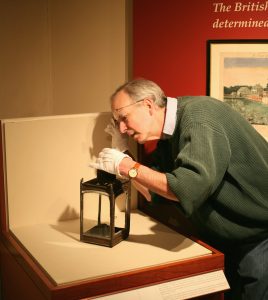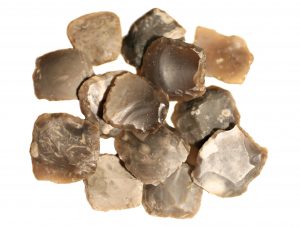As the Director of Historic Arms & Militaria at Bruneau & Co., a material culture specialist and historian, nothing is more exciting to me than visiting historical societies and museums. Large or small, they have things to look at and enjoy for most everyone’s interests, especially mine! Before COVID, I tried to visit a small historical society or museum once a month at least. I setup an appointment and get an idea of their collections off the website then fill them in on my interests. Almost every time I manage to find something interesting, and sometimes I stumble upon things that were super cool and historically important. Over a few blogs I will talk about some of them.

After doing this for so long, I do have a group of favorite places that never fail to excite my passions for historical objects. One of them is the Concord Museum in Concord, Massachusetts. I grew up in the town and went on many school field trips there as a child. I remember the first time I saw the “Paul Revere” lantern. It was one of two that was hung in the North Church in Boston on the night of April 18, 1775, as a signal for Paul Revere and others to begin their ride to spread the alarm that the British Regulars were on the march towards Concord to destroy Provincial supplies. Seeing it made the hair stand up on the back of my neck as a kid and still does to this day. It is on display now with many other fascinating objects in an exhibit called “Beyond Midnight: Paul Revere and His Ride” which is extended till October 12, 2020.
They also have a fascinating find on display from a local avocational archaeologist, Benjamin Lincoln Smith. Many of us that study the events of April 19, 1775, know that the Provincial minute men and militia in Concord formed in a field above the North Bridge before they marched to defend the town and fired on British Regulars. In 1934 while looking for Native American artifacts, Benjamin Smith noticed the field above the bridge had been plowed for the first time in his memory. He went to search for arrowheads and other artifacts and started to find musket flints. There had been rain since the plowing and the flint stood out, in his words, “they stood out against the dark, wet ground like glittering jewels.” By the time he was done searching the area, he had found nearly 100 flints in two rows, roughly facing towards the north bridge. The flints he found are a study on their own and help us understand where the companies were located before they marched down to the bridge, but also the types of muskets being used. Some of the flints are on display in the museum as you start into the exhibit area.

There are so many great objects in the Concord Museum that I could spend a lifetime typing them here. If you are into the start of the American Revolution, Thoreau, Emerson, Alcott, Native American history of the area, they have something for you. Many museums are going to need support after this crisis is over, so look at their website for hours and rules for visitation and go see for yourself. You will not be disappointed!




